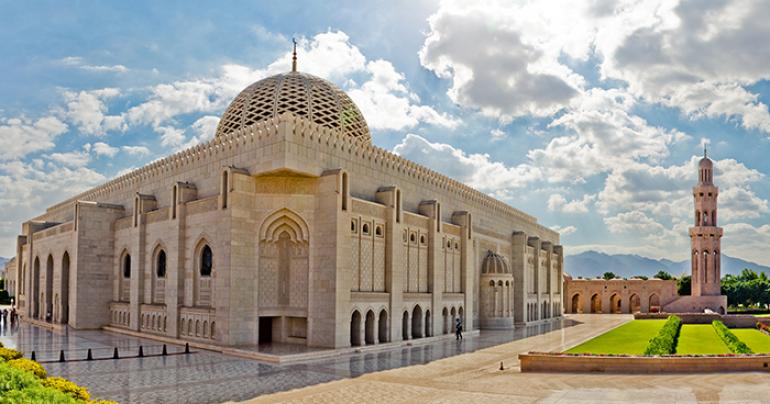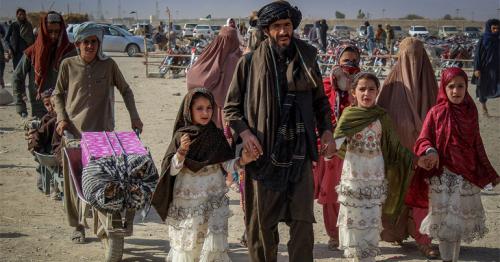The journey of Oman – a walk through time
To look at Oman’s varied landscape is to understand the relationship between nature and man throughout the passage of time.
The Sultanate is a country that is focused on the future, but understands the importance of being rooted in the past, and sharing a culture that goes back millennia with its own people, as well as visitors from around the world.
With less than three weeks to go before the 50th National Day, T Weekly looks at 11 iconic natural and man-made locations across the country’s 11 governorates, and what makes them special to everyone.
Royal Opera House Muscat
Located in Shatti Al Qurum, one of Muscat’s most prestigious neighbourhoods, it is a building that almost effortlessly catches the eye, its white marble exterior gleaming during the daytime, while giving off a subtle glow at night, the feeling of wonder and curiosity it imparts only emphasised by the vertical spotlights that softly illuminate its imposing yet humble exterior.
Built to showcase the diversity of artistic creations from the Sultanate, the region and the world and provide a great space for culture, social and economic development and its implications, ROHM is the brainchild of the late His Majesty Sultan Qaboos bin Said bin Taimour, and was opened in 2011.
One of the Middle East’s first opera houses, according to the Ministry of Tourism, “The vision of the Opera House is to serve as a centre of excellence in global cultural engagement. We strive to enrich lives through diverse artistic, cultural, and educational programmes.”
Dhow Yard, Sur, South Ash Sharqiyah
Oman’s name as an historic seafaring nation known throughout the ancient world had a lot to do with the dhow, the ever-reliable sailing vessel of the Omani trader.
On these boats, which were primarily made from the wood of palm trees, with the trademark triangular sails of the earliest models made from palm fronds, although cotton was later used, sailors used to make the journey to Africa, the Indian Subcontinent, and even China, trading their wares for exotic spices and many tales to share with their families back home.
“Sur’s dhow yard is the perfect place to witness craftsmen build dhows the traditional way,” says the Ministry of Tourism. “This is the only surviving dhow-building yard in Oman.”
Al Buraimi National Garden, Buraimi
An oasis of green that many in Oman’s border governorate flock to, the garden – a pleasant spot located in the eastern portion of the city – is a must visit if you’re in the area, and are looking to spend a few hours surrounded by nature.
A great place to go for a run, take a walk, spend an evening with friends and family, entertain the children, or just spend a few hours reading a book under a tree of your choice, the garden is an integral part of life in this area of the country. With plenty of green grass, lots of trees, and a number of pretty flower beds, it’s a great way to let nature soothe your stresses, while still in the city.
“Al Buraimi’s largest park is a quiet, family-friendly oasis in the city centre with an abundance of well-maintained greenery and play areas,” says the Ministry of Tourism.
Falaj Al Maysar, South Al Batinah
Oman’s falaj network has been designated a spot on the list of UNESCO World Heritage Sites. Designed to transport water to human settlements from naturally occurring sources, most falaj systems were built around the year 500AD, although there is evidence that they were used even around 2,500 BC. It is still very much an integral part of Omani agricultural practices, particularly in villages.
“The fair and effective management and sharing of water in villages and towns is still underpinned by mutual dependence and communal values and guided by astronomical observations,” says UNESCO.
This particular falaj is located in South Al Batinah, and according to the ministry, “It is an exciting experience to walk along the falaj as it moves and passes among residential areas and fields towards the huge Al Rustaq Fort.”
Khabourah Castle, North Al Batinah
Khabourah being located on the coast saw much activity through trade and commerce, requiring the need for fortifications against those who would attempt to raid and plunder the area for its wealth.
In contrast, though, Khabourah Castle was not used as fortification, but a court where local disputes were brought to light. Renovations to the castle were made in 1994, using materials sourced locally from the surrounding areas.
“The restoration and rehabilitation of the castle, located little less than 2km from the main centre of Sohar and close to the Sea of Oman, has been completed,” says the Ministry of Tourism. “The renovation has included restoration of a collapsed wall, apart from the maintenance of the castle’s rooms, entrances and towers, and electrification and other public facilities.”
Al Minzifah, Ibra, South Ash Sharqiyah
The ruins of Al Minzifah, located a short distance from Ibra, the regional capital, provide indication of what life in Oman was like for some in the early 18th century.
“On the western side of the shallow Wadi Ibra, which runs through the town of Ibra, is an abandoned town of mud-brick mansions, Al Minzifah,” says the Ministry of Tourism. “Though only 1,300 metres south of Ibra’s souq, the area of Al Minzifah is rural in character.
“Fields surround these old houses, and originally provided one of Oman’s key crops, dates,” adds the ministry. “The houses, many of which date from the period of prosperity, are of two or occasionally three stories, built from local stone, cemented and plastered with local juss. Care should be taken not to move the structures of these fragile buildings.”
Al Ayn and Bat Tombs, Adh Dhahirah
Another of Oman’s UNESCO World Heritage Sites, Bat, Al Ain and Al Khutm constitute a settlement and its accompanying necropolis that remain remarkably well-preserved given they were originally Bronze Age settlements.
“Further extensions of the site of Bat are represented by the monumental tower at al-Khutm and by the necropolis at Al Ain,” according to UNESCO. “Seven monumental stone towers have been discovered at Bat and one is located in Al Khutm, 2km west of Bat. The towers feature a circular outer wall about 20 to 25 metres in diameter, and two rows of parallel compartments on either side of a central well.”
The tombs of Al Ayn are located some 30km north-east of the settlement of Bat, and feature 21 places of burial which seem to form up in an almost straight line. Built in a rather peculiar beehive-like structure, the tombs were constructed from limestone blocks and assembled with plaster made locally.
Duqm Rock Garden, Al Wusta
Entering the Rock Garden makes you feel as if you’ve fallen off the face of the earth and landed on another planet.
The rocks that lend the garden its name have been shaped by millennia of wind-based erosion, and do lend the area a distinctly other-worldly quality which is only enhanced by the quiet surroundings.
The impact on every rock in the garden is different: some have been smoothed over, and have surfaces resembling the ones you’d find underneath a waterfall, while others’ jagged edges have been only enhanced further.
“The Rock Garden in Duqm is one of the major geological sites of the Sultanate of Oman and considered one of the greatest natural treasures of Duqm. The six-kilometre site brings unusual rock formations, which have been formed over 46 million years,” says the Special Economic Zone Authority of Duqm (SEZAD).
Kumzar, Musandam
So remote is Oman’s northernmost settlement that it is only possible to travel there by boat. A fishing village located on the edge of Musandam, the Omani exclave surrounded by the United Arab Emirates, arriving at Kumzar requires you to receive special permission from the people who live there…check with tour companies in Khasab, the regional capital, and they will arrange a trip for you.
Travelling to Kumzar involves sailing through Musandam’s stunning fjords, which have earned this region the epithet ‘the Norway of Arabia’.
“The town overlooks the Straits of Hormuz, one of the world’s busiest shipping lanes, a fact reflected in the unique language spoken by its inhabitants, Kumzari,” says the Ministry of Tourism. “The town’s population currently stands at around five thousand, with its own school, hospital, power station and desalination plant. The inhabitants live largely by fishing for nine months of the year, netting barracuda, tuna, kingfish and hamour.”
Sultan Qaboos Mosque, Ad Dakhiliyah
Built to blend in yet stand out from the surrounding area, the Sultan Qaboos Mosque in Nizwa, the capital of the Dakhiliyah region, was built in 2009, and spans an area of 80,000 square metres.
The mosque is capable of accommodating up to 10,500 worshippers, and with Nizwa being an historic centre of learning and knowledge in the Gulf, is a fitting location for the largest mosque in Oman, after the Sultan Qaboos Grand Mosque in Muscat.
“Nizwa has, through the ages, been one of Oman’s most important centres of knowledge and learning,” says the Islamic Educational, Scientific and Cultural Organisation. “Its famous mosques used to be schools which produced cohorts of scholars, thinkers, writers and experts. The educational and religious facilities have also played a vital role in the promotion of learning and education.”
Ayn Jarziz, Dhofar
Travel to Oman’s southern region in the summer, and experience amazing weather seldom seen elsewhere. While the rest of the Gulf witnesses peak temperatures, the Dhofar’s Khareef season brings with it refreshing rains and cool breezes, which turn the entire landscape green and bring people from across the world.
While there, it is common to get out of the city and explore the stunning surroundings, blanketed by a layer of mist that only adds to the charm of the area. Located in the midst of a grove, the spring of Ayn Jarziz is great for a dip and is located about 7km from the regional capital of Salalah.
“Dhofar is famous for the presence of springs distributed on the mountain brows and the edges of mountains adjacent to the coastal plain,” says the ministry. “Most of these springs have water all year round.”
tag: omannews , omanlatestnews , muscatnews
Share This Post






